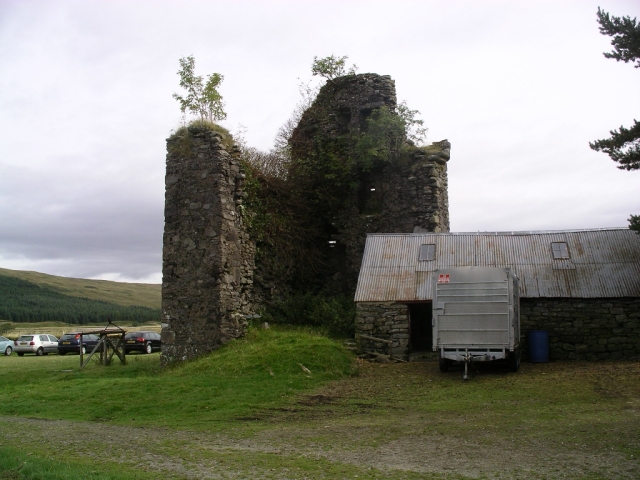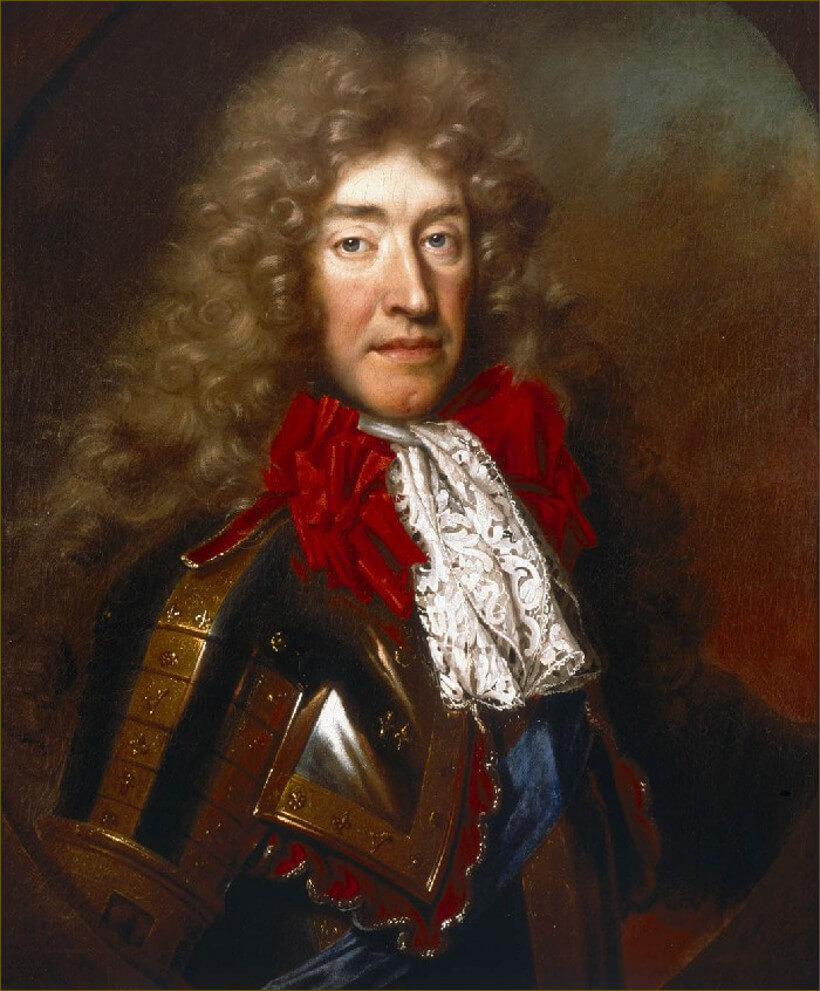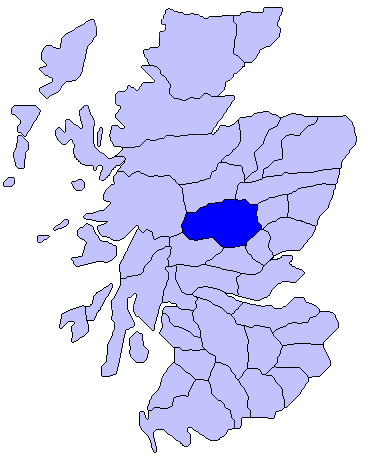|
Massacre Of Glencoe
The Massacre of Glencoe ( gd, Murt Ghlinne Comhann) took place in Glen Coe in the Highlands of Scotland on 13 February 1692. An estimated 30 members and associates of Clan MacDonald of Glencoe were killed by Scottish government forces, allegedly for failing to pledge allegiance to the new monarchs, William III and Mary II. Although the Jacobite rising of 1689 was no longer a serious threat by May 1690, unrest continued in the remote Highlands which consumed military resources the government needed for the Nine Years' War in Flanders. In late 1690, the Scottish government agreed to pay the Jacobite clan chiefs a total of £12,000 in return for swearing an oath of loyalty to William and Mary; however, disagreements over how to divide the money meant by December 1691 none of them had taken the oath. Under pressure from William, Secretary of State Lord Stair decided to make an example as a warning of the consequences for further delay. The Glencoe MacDonalds were not the only ... [...More Info...] [...Related Items...] OR: [Wikipedia] [Google] [Baidu] |
Jacobite Rising Of 1689
The Jacobite rising of 1689 was a conflict fought primarily in the Scottish Highlands, whose objective was to put James II & VII back on the throne, following his deposition by the November 1688 Glorious Revolution. Named after "Jacobus", the Latin for James, his supporters were known as 'Jacobites' and the associated political movement as Jacobitism. The 1689 rising was the first of a series of rebellions and plots seeking to restore the House of Stuart that continued into the late 18th century. Part of the wider European conflict known as the Nine Years War, the Scottish revolt was intended to support the 1689 to 1691 Williamite War in Ireland. Despite a decisive Jacobite victory at Killiecrankie in July 1689, their charismatic leader John Graham, 1st Viscount Dundee was killed in the final attack. His death, combined with limited internal or external support, meant the rising never presented a real threat to the new administration of William and Mary II. Major military action ... [...More Info...] [...Related Items...] OR: [Wikipedia] [Google] [Baidu] |
Lochaber
Lochaber ( ; gd, Loch Abar) is a name applied to a part of the Scottish Highlands. Historically, it was a provincial lordship consisting of the parishes of Kilmallie and Kilmonivaig, as they were before being reduced in extent by the creation of ''Quoad Sacra'' parishes in the 19th century. Lochaber once extended from the Northern shore of Loch Leven, a district called Nether Lochaber, to beyond Spean Bridge and Roybridge, which area is known as Brae Lochaber or ''Braigh Loch Abar'' in Gaelic. Lochaber is now also used to refer to a much wider area, one of the 16 ward management areas of the Highland Council of Scotland and one of eight former local government districts of the two-tier Highland region. The main town of Lochaber is Fort William. According to legend, a glaistig, a ghostly woman-goat hybrid, once lived in the area. Name William Watson outlined two schools of thought on this topic. He favoured the idea that ''Abar'' came from the Pictish and Welsh for "river m ... [...More Info...] [...Related Items...] OR: [Wikipedia] [Google] [Baidu] |
Battle Of Killiecrankie
The Battle of Killiecrankie ( gd, Blàr Choille Chnagaidh), also referred to as the Battle of Rinrory, took place on 27 July 1689 during the 1689 Scottish Jacobite rising. An outnumbered Jacobite force under John Graham, Viscount Dundee and Sir Ewen Cameron of Lochiel defeated a government army commanded by General Hugh Mackay. James VII went into exile in December 1688 after being deposed by the Glorious Revolution in Scotland. In March 1689, he began the Williamite War in Ireland, with a simultaneous revolt led by Dundee, previously military commander in Scotland. Hampered by lack of men and resources, Dundee gambled on a decisive battle which he hoped would attract wider support. Although Killiecrankie was an unexpected and stunning victory, his army suffered heavy casualties and he was killed in the final minutes. It did little to change the overall strategic position, and the Jacobites were unable to take advantage of their success. Background In February 1685, the Ca ... [...More Info...] [...Related Items...] OR: [Wikipedia] [Google] [Baidu] |
John Graham, 1st Viscount Dundee
John Graham, 7th of Claverhouse, 1st Viscount Dundee (21 July 1648 – 27 July 1689) was a Scottish soldier and nobleman, a Tory and an Episcopalian. He was responsible for policing southwest Scotland during and after the religious unrest and rebellion of the late 17th century, and went on to lead the Jacobite rising of 1689. After his death, Presbyterian historians dubbed him "Bluidy Clavers". Contemporary evidence for the fairness of this soubriquet in the Covenanting tradition is mixed. Tales of the Covenanters and Covenanter monuments hold Claverhouse directly responsible for the deaths of adherents of that movement. However, Claverhouse's own letters frequently recommended lenient treatment of Covenanters,Letters of John Grahame of Claverhouse, Viscount of Dundee – James Bannatyne, Edinburgh (1824) and in 1684 he married into a prominent Covenanter family. Later, as a general in the Scottish army, Claverhouse remained loyal to King James VII of Scotland after the Revol ... [...More Info...] [...Related Items...] OR: [Wikipedia] [Google] [Baidu] |
Williamite War In Ireland
The Williamite War in Ireland (1688–1691; ga, Cogadh an Dá Rí, "war of the two kings"), was a conflict between Jacobite supporters of deposed monarch James II and Williamite supporters of his successor, William III. It is also called the Jacobite War in Ireland, Williamite Conquest of Ireland, or the Williamite–Jacobite War in Ireland. The proximate cause of the war was the Glorious Revolution of 1688, in which James, a Catholic, was overthrown as king of England, Ireland and Scotland and replaced by his Protestant daughter Mary and nephew and son-in-law William, ruling as joint monarchs. James's supporters initially retained control of Ireland, which he hoped to use as a base for a campaign to reclaim all three kingdoms. The conflict in Ireland also involved long-standing domestic issues of land ownership, religion and civic rights; most Irish Catholics supported James in the hope he would address their grievances. A small number of English and Scottish Catholics, an ... [...More Info...] [...Related Items...] OR: [Wikipedia] [Google] [Baidu] |
Battle Of Mulroy
The Battle of Mulroy (''Blàr a' Mhaoil Ruaidh'' in Scottish Gaelic) was a Scottish clan battle fought in August 1688 in the Lochaber district of Scotland. It was fought between the Clan Mackintosh who were supported by government troops under Kenneth Mackenzie of Suddie against the Clan MacDonald of Keppoch who were supported by the Clan Cameron over disputed lands in the Braes of Lochaber. The battlefield has been inventoried and protected by Historic Scotland under the Scottish Historical Environment Policy of 2009. Background In the 15th century the chief of Clan Mackintosh had been granted a charter for the lands of Glenroy and Glen Spean, but the Clan MacDonald of Keppoch had refused to give up possession and had declined to recognise Mackintosh's title. In spite of several attempts that had been made with or without the authority of the law to eject them, the MacDonalds had been able to hold on to the Brae of Lochaber. In September 1667, a marauding party of MacDonalds ... [...More Info...] [...Related Items...] OR: [Wikipedia] [Google] [Baidu] |
Glorious Revolution In Scotland
The Glorious Revolution in Scotland refers to the Scottish element of the 1688 Glorious Revolution, in which James VII was replaced by his daughter Mary II and her husband William III of Orange, William II as joint monarchs of Kingdom of Scotland, Scotland and Kingdom of England, England. Prior to Acts of Union 1707, 1707, the two kingdoms shared a common monarch but were separate legal entities, so decisions in one did not bind the other. In both countries, the Revolution confirmed the primacy of Parliament over the Crown, while the Church of Scotland was re-established as a Presbyterian rather than Episcopalian polity. Although James became king in February 1685 with widespread support in both countries, tolerance for his personal Catholicism did not apply to the religion in general. When the Parliaments of Parliament of England, England and Parliament of Scotland, Scotland refused to rescind Test Act, legal restrictions on Catholics, James suspended them and ruled by decree. ... [...More Info...] [...Related Items...] OR: [Wikipedia] [Google] [Baidu] |
James VII And II
James VII and II (14 October 1633 16 September 1701) was King of England and King of Ireland as James II, and King of Scotland as James VII from the death of his elder brother, Charles II, on 6 February 1685. He was deposed in the Glorious Revolution of 1688. He was the last Catholic monarch of England, Scotland, and Ireland. His reign is now remembered primarily for conflicts over religious tolerance, but it also involved struggles over the principles of absolutism and the divine right of kings. His deposition ended a century of political and civil strife in England by confirming the primacy of the English Parliament over the Crown. James succeeded to the thrones of England, Ireland, and Scotland following the death of his brother with widespread support in all three countries, largely because the principles of eligibility based on divine right and birth were widely accepted. Tolerance of his personal Catholicism did not extend to tolerance of Catholicism in general, and the ... [...More Info...] [...Related Items...] OR: [Wikipedia] [Google] [Baidu] |
Kintyre
Kintyre ( gd, Cinn Tìre, ) is a peninsula in western Scotland, in the southwest of Argyll and Bute. The peninsula stretches about , from the Mull of Kintyre in the south to East and West Loch Tarbert in the north. The region immediately north of Kintyre is known as Knapdale. Kintyre is long and narrow, at no point more than from west coast to east coast, and is less than wide where it connects to Knapdale. The east side of the Kintyre Peninsula is bounded by Kilbrannan Sound, with a number of coastal peaks such as Torr Mor. The central spine of the peninsula is mostly hilly moorland, the highest point being Beinn an Tuirc at .Ordnance Survey. Landranger 1:50,000 Map Sheet 68 (South Kintyre & Cambeltown) The coastal areas and hinterland, however, are rich and fertile. Kintyre has long been a prized area for settlers, including the early Scots who migrated from Ulster to western Scotland and the Vikings or Norsemen who conquered and settled the area just before the start of t ... [...More Info...] [...Related Items...] OR: [Wikipedia] [Google] [Baidu] |
Cowal
Cowal ( gd, Còmhghall) is a peninsula in Argyll and Bute, in the west of Scotland, that extends into the Firth of Clyde. The northern part of the peninsula is covered by the Argyll Forest Park managed by Forestry and Land Scotland. The Arrochar Alps and Ardgoil peninsula in the north fringe the edges of the sea lochs whilst the forest park spreads out across the hillsides and mountain passes, making Cowal one of the remotest areas in the west of mainland Scotland. The Loch Lomond and The Trossachs National Park extends into Cowal. The peninsula is separated from Knapdale by Loch Fyne, and from Inverclyde and North Ayrshire to the east by the Firth of Clyde. Loch Long and its arm, Loch Goil are to the north-east. The south of the peninsula is split into three forks by Loch Striven and Loch Riddon (Loch Ruel). The Isle of Bute lies to the south separated by the narrow Kyles of Bute which connect the Firth of Clyde to Loch Riddon. Cowal's only burgh is Dunoon in the south-east, fro ... [...More Info...] [...Related Items...] OR: [Wikipedia] [Google] [Baidu] |
Argyll's Rising
Argyll's Rising, also known as Argyll's Rebellion, was an attempt in June 1685 to overthrow James II and VII. Led by Archibald Campbell, 9th Earl of Argyll, the rising was intended to tie down Royal forces in Scotland while a simultaneous rebellion under James Scott, 1st Duke of Monmouth began in England. Both rebellions were backed by dissident Protestants opposed to the accession of the Roman Catholic James to the throne. Argyll, chief of Clan Campbell, planned to raise several thousand men from his own estates and expected to receive additional support from Presbyterian dissidents. He sailed from Holland on 2 May with around 300 men, but on landing in Scotland attracted few recruits. Hampered by Argyll's inexperience as a commander and disagreements amongst the rebel leaders, and pursued by government militia under the Marquess of Atholl, the rebels began to disperse in mid June after an abortive invasion of Lowland Scotland. Most of their leaders were captured, including Arg ... [...More Info...] [...Related Items...] OR: [Wikipedia] [Google] [Baidu] |
Atholl
Atholl or Athole ( gd, Athall; Old Gaelic ''Athfhotla'') is a large historical division in the Scottish Highlands, bordering (in anti-clockwise order, from Northeast) Marr, Badenoch, Lochaber, Breadalbane, Strathearn, Perth, and Gowrie. Historically it was a Pictish kingdom, becoming one of the original provinces of the Kingdom of Alba before being incorporated into the sheriffdom and later county of Perthshire. Today it forms the northern part of Perth and Kinross, Scotland. Etymology In Scottish Gaelic the name is ''Athall'', which traditionally has been interpreted as deriving from the Old Irish ''Ath-fhotla'', or 'New Ireland' ( Fotla being a traditional name for Ireland). The explanation given for this relates to a conjectured Gaelic settlement of Scotland, which was previously inhabited by the Picts. James E. Fraser has called the "New Ireland" interpretation into question. On the basis of the early spelling ''Athochlach'', the first element has been proposed as rep ... [...More Info...] [...Related Items...] OR: [Wikipedia] [Google] [Baidu] |

.jpg)

.jpg)








